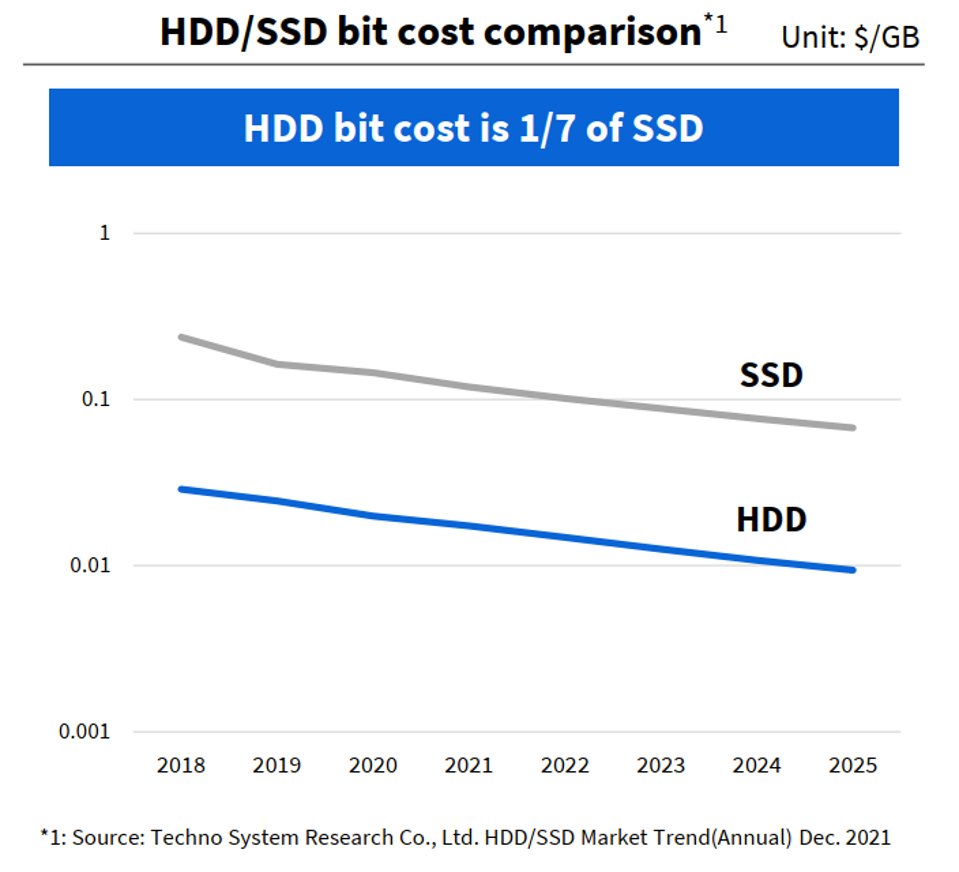From Megabytes to Terabytes: The Evolution of Spinning Platter Hard Disk Drives
on
In this episode of Elektor Engineering Insights, Stuart Cording explores the evolution of spinning platter hard drive technology. Just twenty years ago, 850 MB felt like a lot. Today, drives of 20 TB are available. Despite the rise of flash memory, magnetic Hard Disk Drive (HDD) storage remains a vital component of the data retention strategy of data centers. Rainer Kaese from Toshiba is this show’s guest, and he shares insights into HDD technology and its various use cases.
The Significance of HDDs
HDDs are nearly six decades old, having been introduced by IBM in 1956. Nevertheless, they are still essential for data centers, digital surveillance systems, and NASs despite the rise of faster, lower power, and compact flash storage solutions. Rainer highlights the cost-effectiveness of HDDs for storing large amounts of data, both in local businesses and enterprises as well as in cloud storage environments. They have a cost advantage in terms of price per capacity compared to flash components, primarily due to their efficient design.
SSDs can't replace HDDs
SSDs can't displace HDDs, even if price parity were to be achieved, Rainer makes the point that manufacturing enough flash capacity to replace HDDs would require trillions of dollars in investment, which is not feasible. Looking at historical data, cost-per-bit for both HDDs and SSDs is dropping. However, because the lines of the graph (below) run parallel to one another, there is no foreseeable time when SSDs will ever be cheaper per unit capacity than HDDs.

HDDs in Data Centers
While HDDs may not match SSDs in terms of latency or read/write times, they can be combined in different ways to achieve specific performance goals in data centers. Parallel operation in data centers allows HDDs to compete effectively with SSDs, offering a cost-effective solution. In the interview, Rainer elaborates on Toshiba's research into HDD performance in data center settings and the role HDDs play in cloud computing.
Diversified Range of Internal HDDs
The next topic is the development of HDDs over the past decade, with a focus on 3.5-inch drives and their increasing capacity thanks to innovations such as helium-filled drives and microwave-assisted recording technology. The discussion focused on optimizing cost-per-gigabyte while maintaining reliability. HDDs are categorized into different classes, each designed for specific use cases and fulfilling different quality expectations. Desktop drives, for example, have a lower price point and reliability than enterprise drives designed for 24/7 operation.

Home and Business NAS Systems
Many viewers may have Network-Attached Storage (NAS) systems in their homes or businesses. When it comes to replacing NAS drives, Rainer recommended changing them after they have been in use for about five years (about 40,000 hours) to ensure data integrity and to take advantage of higher-capacity drives. Replacing drives regularly can help prevent data loss before a sudden failure occurs.
Future of HDDs
HDDs will continue to evolve, with expected capacities of 30–40 terabytes within this decade and possibly 100–200 terabytes in the future. Rainer makes the point that, technically, such capacities are feasible today. However, the challenge to the industry is achieving these capacities at a cost customers are willing to pay.
For those interested in the full episode and further information, jump over to Elektor TV - Industry or watch below:

Hey - I have a great story...
Great! We'd love to hear it. Feel free to get in touch to learn how to share your news with us. We'll try to squeeze it in somewhere, whether a product launch, new technology, breakthrough, or event. Simply contact Stuart Cording via email, on Twitter, or LinkedIn.


Discussion (0 comments)